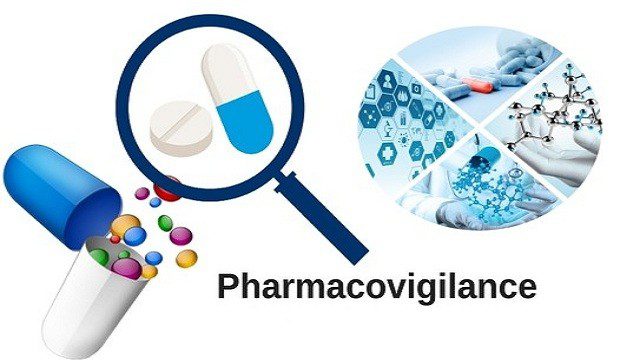Is there anything more important than the safety of your patient? Your patient safety is your top priority as a health care provider. To ensure patient safety, it is crucial to perform a risk-benefit analysis for each patient before you make any treatment or intervention. Any science or activity that supports this idea is vital. We can also discuss the importance and necessity of pharmacovigilance.

What’s Pharmacovigilance?
Pharmacovigilance covers a wide range of topics. It covers drug interactions, medication errors and lack of drug efficacy as well as unauthorized medicines and irrational uses of drugs. [1]
The WHO defines Pharmacovigilance as ” Science and activity related to the detection, assessment and prevention of adverse drug effects or other drug-related problems. [2]
You are wrong to think that pharmacovigilance only concerns medications’ safety. Pharmacovigilance covers all aspects of safety for drugs, medical devices, biological products, vaccines and blood products. Pharmacovigilance also includes the responsibility of providing training programs for health care providers and communicating with them. You can also predict that pharmacovigilance will play more important roles over the next decade, as the system is becoming increasingly complex. [1]
The Impact Of Pharmacovigilance On Adverse Drug Reactions
More than 100,000 people died from adverse drug reactions in 1994. Between 1999 and 2008, adverse drug reactions caused 26,399 deaths and 0.9% emergency hospital admissions. This means that adverse drug reactions contribute to increasing patient morbidity, mortality, and economic loss. [4]
The international central database collects adverse drug reports from all countries and helps to overcome this problem. This has a significant effect on the safety of medicines, patient safety, and the performance of national drug regulatory authorities.
Pharmacovigilance and Clinical Trial Regulation
We have seen a marked increase in clinical trials over the last few years. This phenomenon is a double-edged sword!
New medicine development is vital for many patients. However, an increase in clinical trials could affect the functions of regulators and ethics committees. This may result in unethical patient practices, poor reporting and poor monitoring of patients during clinical trials. [1]
These challenges were overcome by pharmacovigilance who participated in the regulation of clinical trials to ensure proper monitoring, reporting and assessment. CIOMS (Council for International Organization of Medical Sciences), Pharmacovigilance Certification, have the same roles. They also coordinate and standardize the international reporting of adverse drugs between pharmaceutical manufacturers and regulatory authorities. [6]
Pharmacovigilance and Post-Marketing Saftey Monitoring
After their approval, about 10% of newly approved drugs are pulled from the market. It is not possible to guarantee the safety of a new drug if it has been approved. Premarket studies cannot determine the drug safety profile in its entirety. The results of drug safety profiles may be affected by small sample sizes, shorter study durations, and exclusion of certain patient groups, such as the elderly or children. The pharmaceutical companies also make more effort to prove drug safety than efficacy. [3]
It is not safe to use a drug for many years on a large number of patients. Vioxx (Rofecoxib), was approved by FDA in 1999. It was withdrawn from market in 2004. Vioxx was approved by the FDA in 1999 and withdrawn from the market in 2004. It proved to be an effective non-steroidal anti-inflammatory drug that has a lower risk for gastrointestinal bleeding. However, it was responsible for serious cardiovascular events in thousands of Americans over these years. [7]
The role of pharmacovigilance is essential in drug safety monitoring for adverse drug events. This applies to both new and old medicines. The community and health care providers play a crucial role in reporting adverse drug events. This supports the role of Pharmacovigilance. [3]
Pharmacovigilance and Monitoring Herbal and Traditional Medicines
Why is it important to monitor herbs’ use? It is completely safe because it comes from nature. This is a common misconception among many people. Some herbal products can be contaminated with harmful substances that can have severe consequences for the user. Some herbs can interact with certain drugs, which could lead to an unwelcome increase or decrease of drug concentrations.
To ensure their safety, the National Pharmacovigilance also included traditional and herbal medicines in its programs. [1]
The Importance Of Vaccine Pharmacovigilance
Most people believe vaccines are safe. Any change to this belief could lead to serious consequences. To ensure that the public adheres to vaccine programs, it is important to monitor vaccine safety. [1] This is where the idea of vaccine pharmacovigilance comes in: “It’s the science and activities related to the detection and assessment, understanding prevention and communication of adverse reactions following immunization or any other vaccine-related issues.”
Importance and Value of National Pharmacovigilance Centers in Educating, Training, and Supervising Health Care Providers
It is not difficult to see the importance of health care providers supporting pharmacovigilance around the world. The health care provider must be well-aware in order to recognize adverse drug events.
National Pharmacovigilance Centers play a vital role in training health care professionals to identify and report adverse drug reactions. [1] These centres are approved by WHO, which also includes countries participating in the WHO Program for International Drug Monitoring. Any adverse drug event can be reported to the National Pharmacovigilance Center by both the community and health care professionals. [9]
We can conclude that pharmacovigilance is important and plays a significant role in patient safety. To achieve the best results, it is important to involve the community as well as health care providers.


